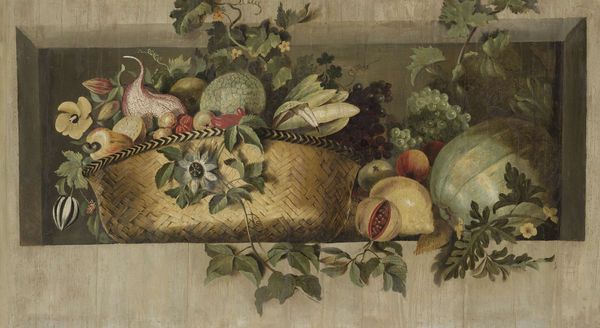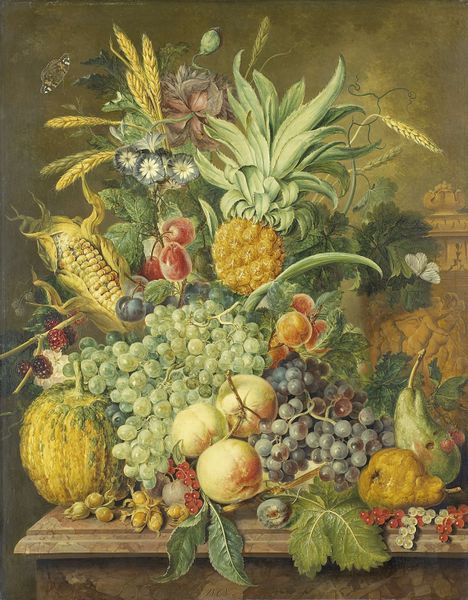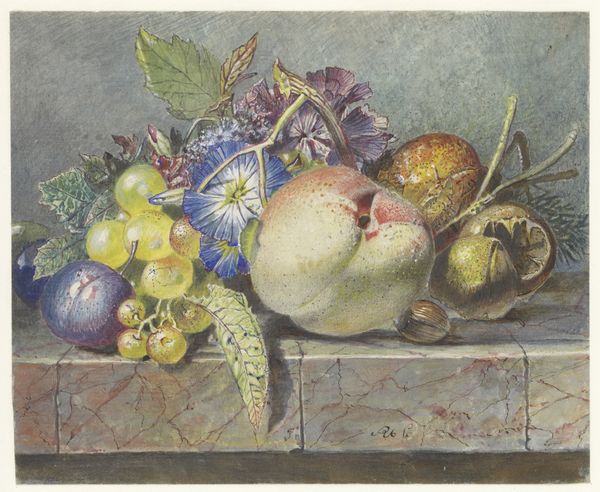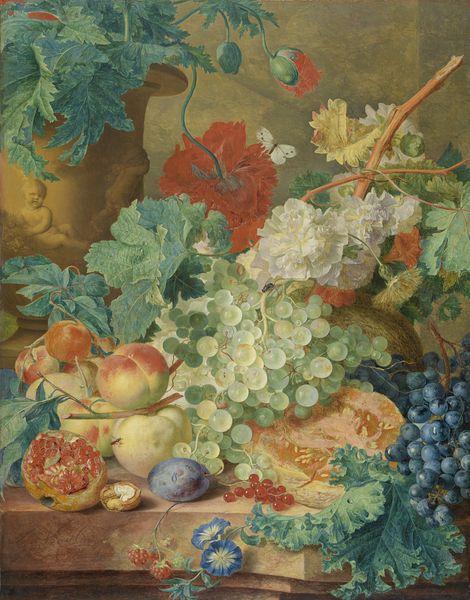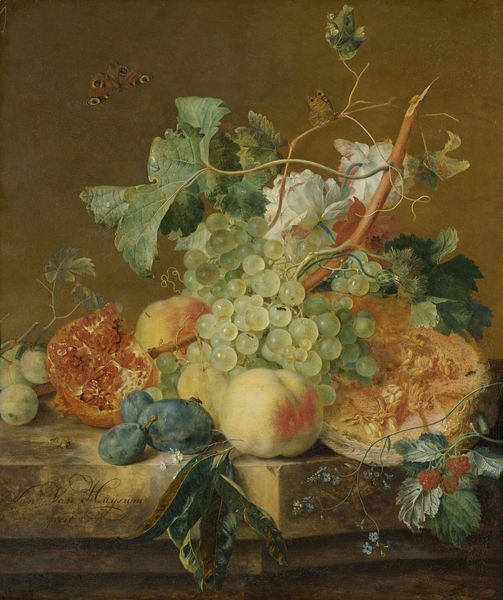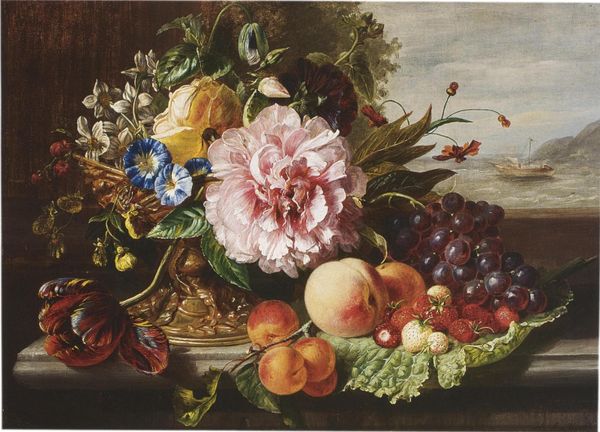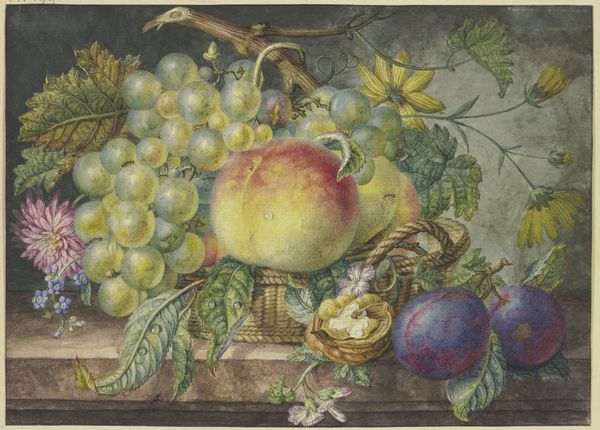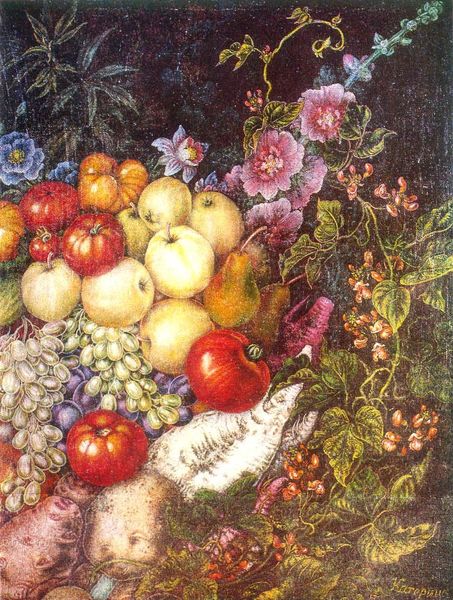
painting, oil-paint
#
gouache
#
baroque
#
painting
#
oil-paint
#
oil painting
Copyright: Public domain
Curator: Today we are looking at “Studies,” an oil painting by Jan Brueghel the Elder. Editor: My first thought? Delicious. Seriously, I want to reach in and grab that perfectly ripe pear. It feels almost... tactile. I can practically smell the earthiness. Curator: Brueghel, working in the Baroque period, was part of a larger trend in Northern Europe, reflecting not just prosperity, but the dawn of natural science and the detailed recording of the natural world. The still life, especially one abundant like this, speaks to themes of wealth, trade, and also perhaps transience. Editor: Transience for sure. It’s beautiful, but I also know that artichoke will be slimy in a week! Still, I find something joyful in its hyperrealism. Almost naive, as if the artist is just really excited about plums. Curator: While its "nativeness" is debatable, the focus on fruits and vegetables connects with issues surrounding the global economy of the 17th century, the accessibility of food and privilege, the exploration of the “new” world for new foodstuffs and botanicals, and the beginning of specialized agricultural practice, so there's a definite social implication. Editor: True. Thinking about it, even this idealized version speaks volumes about access, right? Who gets to enjoy this bounty, who is kept away from it? Art history really gets you thinking, huh? Curator: Absolutely, the socio-political and economic implications embedded within this artistic and historic period is quite incisive if you investigate beneath the surface. Editor: Well, it makes you realize a still life is never just a bowl of fruit. Thanks for the lesson. Curator: Thank you! It is essential to understanding that it is far more complex than we presume at first glance.
Comments
No comments
Be the first to comment and join the conversation on the ultimate creative platform.


